In today’s world, most of our creature comforts, survival equipment, and communication tools require electricity. When disaster strikes, grid power is one of the first utilities to fail and one of the last to be restored. Systematic preparation and investment in key capabilities can keep you and your family powered during a natural disaster or other power disruption.
Basic Electrical Terms
- Power (kilowatts) – amount of power that a source can discharge at any given time
- Capacity (kilowatt hours) – total power a power source can provide; for batteries, this is the amount of power in the battery; for generators, this would be a function of generator power and amount of fuel
- Flow rate (amps) – speed of the electrical flow; seen on individual appliances or home electrical panels
- Force (volts) – electrical force; standard voltage in the US is 120V at a frequency of 60 hZ
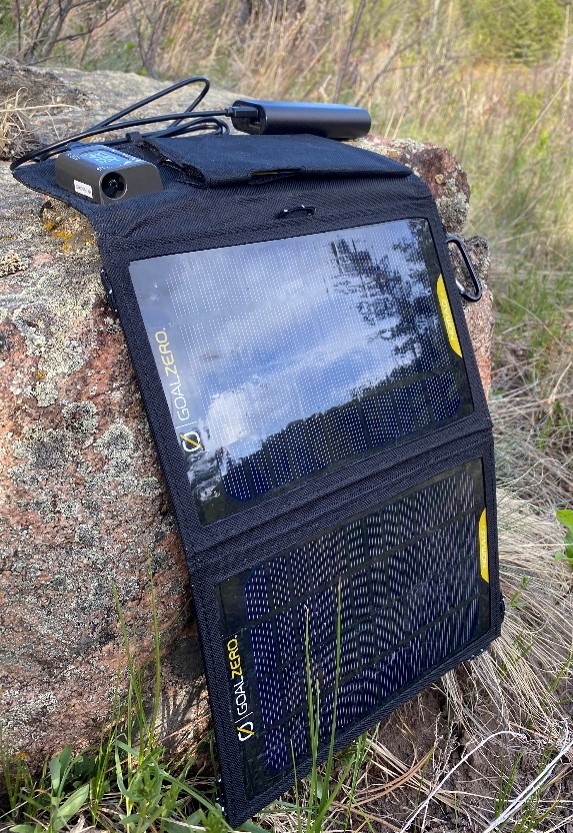
RELATED: How to Pack for a Big Outdoor Trip – Adventure 101
Hierarchy of Power Systems
The best way to think about power systems for your survival plan is in three levels. An easy analogy to help understand the three levels is in how a Special Forces soldier plans their survival equipment across three different levels of kit – level 1 (on your person), level 2 (on your LCE / body armor), and level 3 (in your ruck sack).
Power planning can use the same approach. The three basic levels are (L1) on person, (L2) portable, (L3) and stationary. These three power levels will allow a survivor to scale power sources to a variety of situations. Level 1 power sources are similar to what many folks consider EDC devices (e.g., cell phone, flash light) with the possible addition of a backup battery in a bugout bag or briefcase. Level 2 power sources provide long-term capability but will require a vehicle to move a certain distance. Level 3 power sources are permanently installed at a secure location, such as a home or cabin, and can power a wider variety of applications.
Below are the three levels depicted as a pyramid because the bottom (Level 3) is the most capable but also lease mobile. Determining your family’s needs within each level can ensure power during outages or emergencies. Use the below key considerations to select the right equipment for your situation within each level.
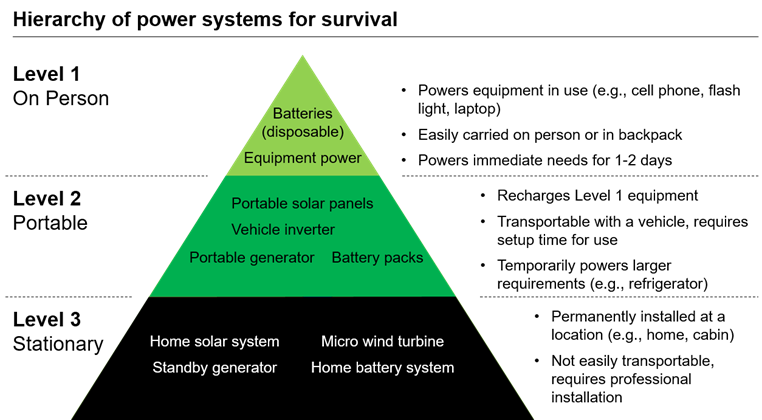
RELATED – The Importance of Mental and Physical Fitness Prep – Adventure 101
Key Considerations
- Power requirements – The most daunting part of power planning is determining your power requirements.
- Level 1 – Make a list of the mobile equipment that requires power (both external battery and powered by aninternal battery). List out the battery types and quantities. Determine power requirements for equipment withan internal battery (e.g., iPhone) and then your potential use (number of charges per day). Double your needs for an emergency or in cold weather
- Level 2 – First priority is to keep your Level One devices charged (through a direct plug in or by recharging batteries). Also determine other critical equipment that may need to be charged in an emergency (e.g., deep freezer). Add up the power requirement (watts), realize that electric motors / compressors generally draw additional power when starting.
- Level 3 – Take your Level 2 planning to the next level. Determine all of the appliances / applications that you would want to power in an emergency (e.g., air conditioning). Other ways to back into this is asking your utility for your “peak demand” or hiring an electrician to evaluate your breaker cabinet.
- Portability – Survival equipment should increase your ability to move quickly, not degrade it. Balancing mobility with capability in each level is essential to fitting the equipment into your survival plans.
- Cost – As with most equipment, capability comes at a premium. Start with low cost solutions (e.g., backup battery to cell phones, vehicle inverter) to build out basic capability and then procure more capable solutions (e.g., portable generator) as your budget allows.
- Duration – The first day or two of a disaster are when people are at their most vulnerable and should be the easiest to develop a power plan for. Longer outages or disasters require stocks of fuel (or weather to power renewable sources). Generator Source provides an easy chart to estimate fuel consumption for diesel generators.
- Local environment – the environment plays a large part in the equipment you want to power (e.g., A/C unit in Florida) as well as the availability of power sources. Home standby generators are especially effective / easy in areas with good natural gas availability.
- Primary use – starting amps required for large electric motors, pumps, and compressors can require industrial grade generators (such as MultiQuip or Cummins Onan).
- Long term power to sensitive electronics (e.g., desktop computer, LCD TV) requires ‘clean’ power of <5% Total Harmonic Distortion. Inverter Generators such as a Cummins 2.5 kW or the larger 4.5 kW are perfect for these applications.
- Local regulations – Many local air boards have strict requirements on generators. The EPA’s tier scale describes how clean the emissions of a particular engine are. The highest (cleanest) rating is Tier 4 Final, which is required in parts of California – an advanced Multiquip 6 kW is an example of a Tier 4 final unit.
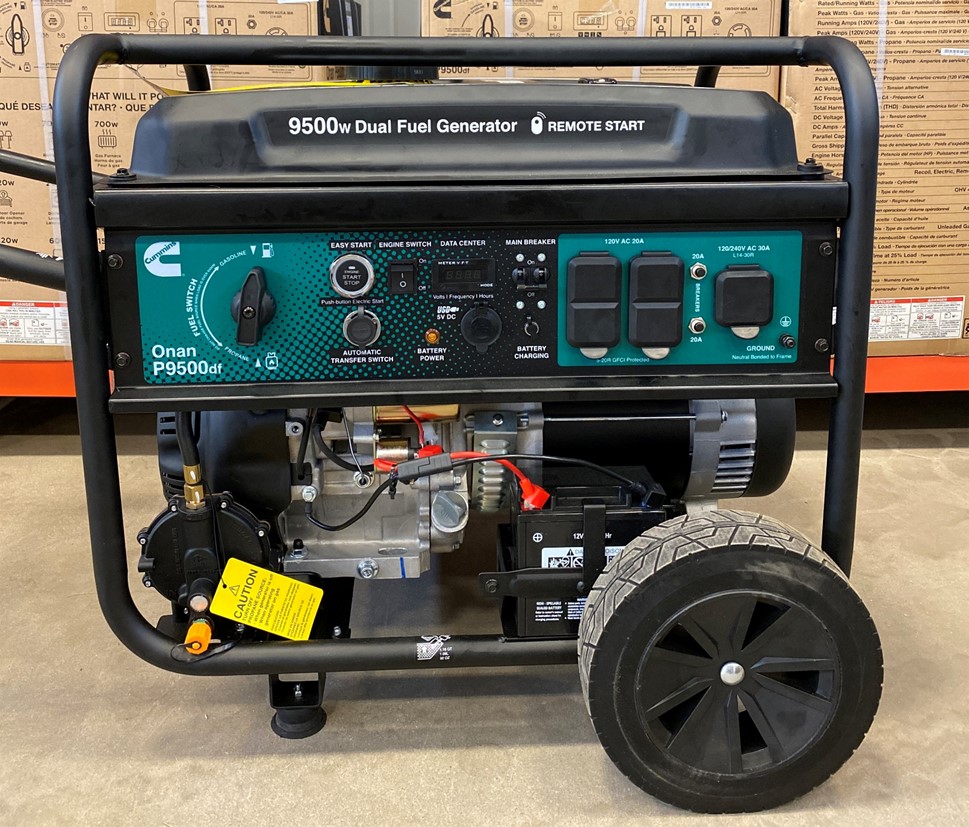
RELATED: Peak-Bagging in the Us: Getting Climbers High since 1876
Sources of Equipment
- Level 1 – Amazon or any big box retailer are great sources for disposable batteries, rechargeable batteries, and cell phone backup batteries. Look for a battery with >10,000
- Level 2 –
- Portable solar & battery combos – Goal Zero makes a variety of products for every use case. Pairing rechargeable cell phone batteries with a solar panel allows you to store energy for when it’s needed. Kohler also makes the enCUBE 1.8 kW battery system to support larger / longer battery uses.
- Portable generators – A number of reputable generators are available from Generator Mart.
- Vehicle Inverter – Harbor Freight carries a 2000 watt (2 kW) inverter
- Level 3 –
- Generator Mart offers a number of home standby generators from 10 – 80 kW, available in Natural Gas or Diesel and with Automatic Transfer Switches.
- Local electricians can also assist with sizing requirements and installation
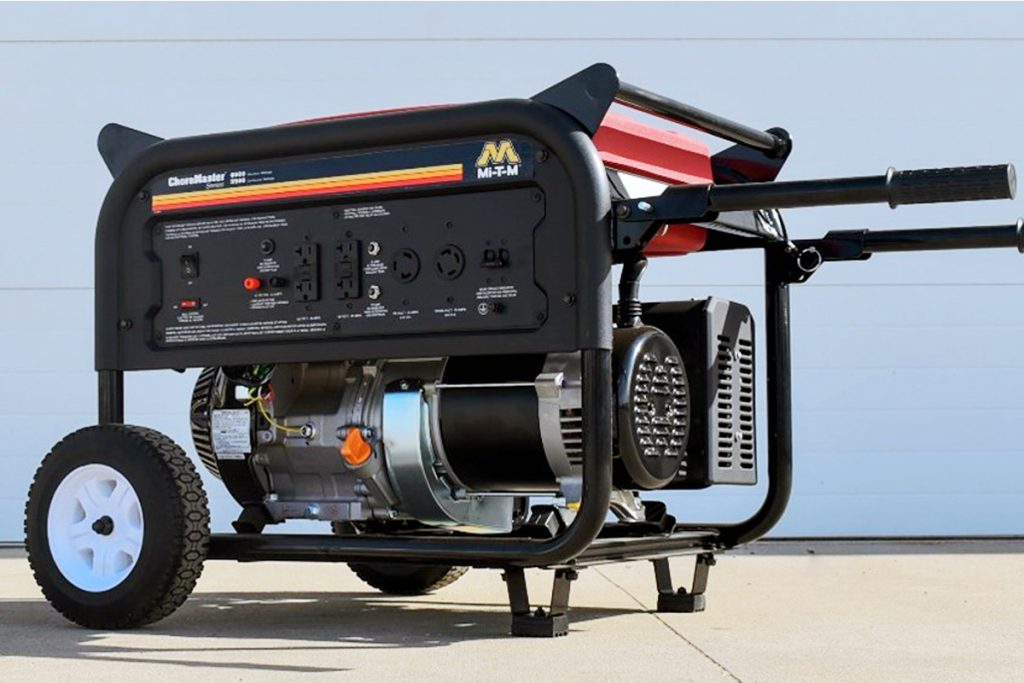
RELATED: First Woman to Solo Hike Appalachian Trail Was an All-American Badass
Enabling Equipment
- Rechargeable batteries & charger – Rechargeable batteries allow you to capture energy from a generator, vehicle, or solar set up in a format you can use with many devices. Amazon Basics hits a particularly good price point.
- Extension cords – Extension cords allow you to keep generator fumes far from where you are using the electricity (e.g., run a cord from the generator outside to your kitchen refrigerator)
- Automatic Transfer Switch (ATS) – an ATS allows a home standby generator to automatically sense an outage and start to pick up the load. This minimizes the outage time and maintains quality of life.
- Remote start capability – home standby generators utilize ATSs to start automatically. Some manufacturers (such as Cummins) provide key fobs to remotely start generators from a range of ~100 feet, such as on their 9.5 kW Storm Generator
This content was originally posted by Fieldcraft Survival on June 4, 2021.
READ NEXT – National Park Murders: Hundreds Killed, Missing – No One Is Talking

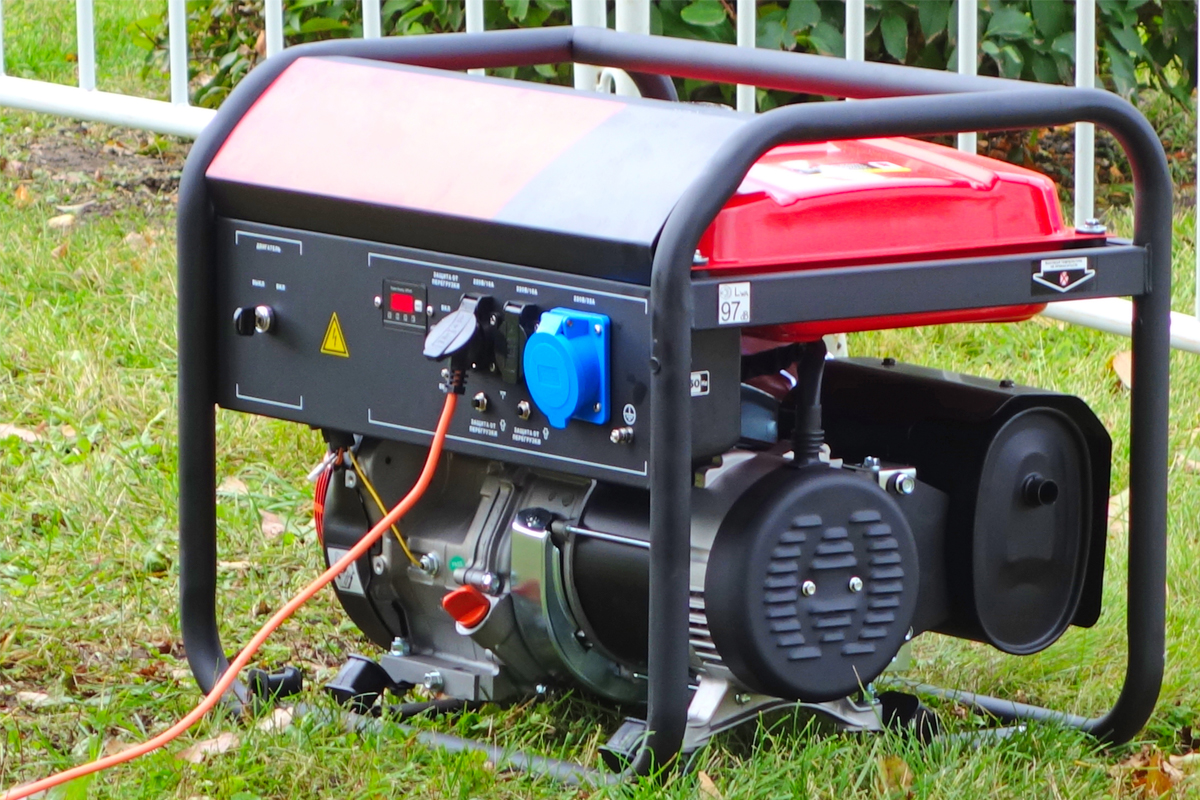






Comments